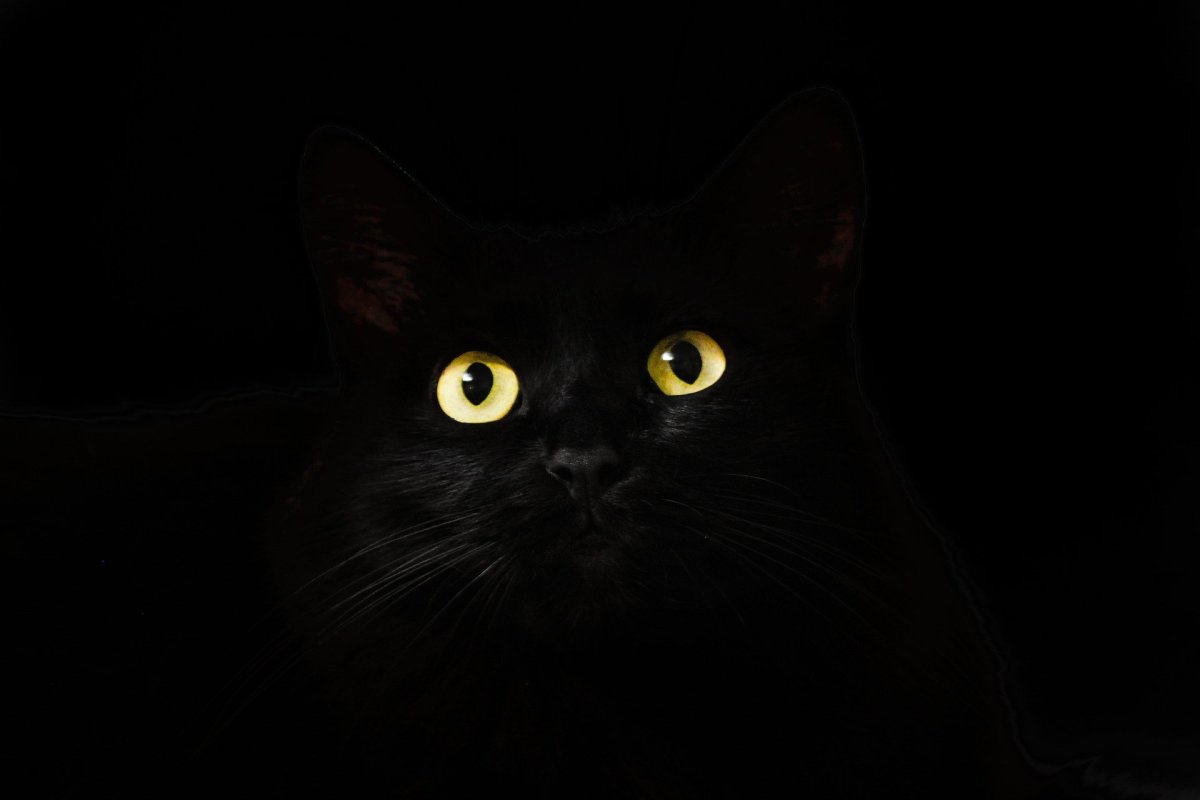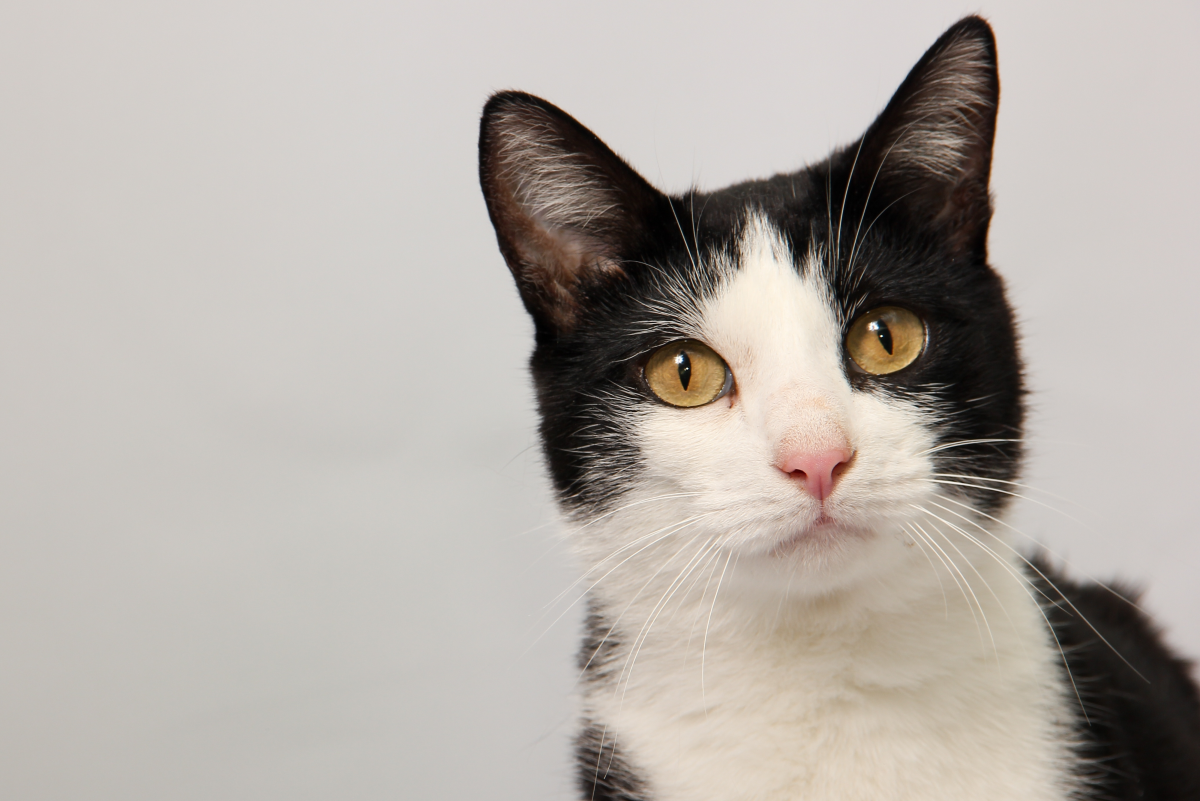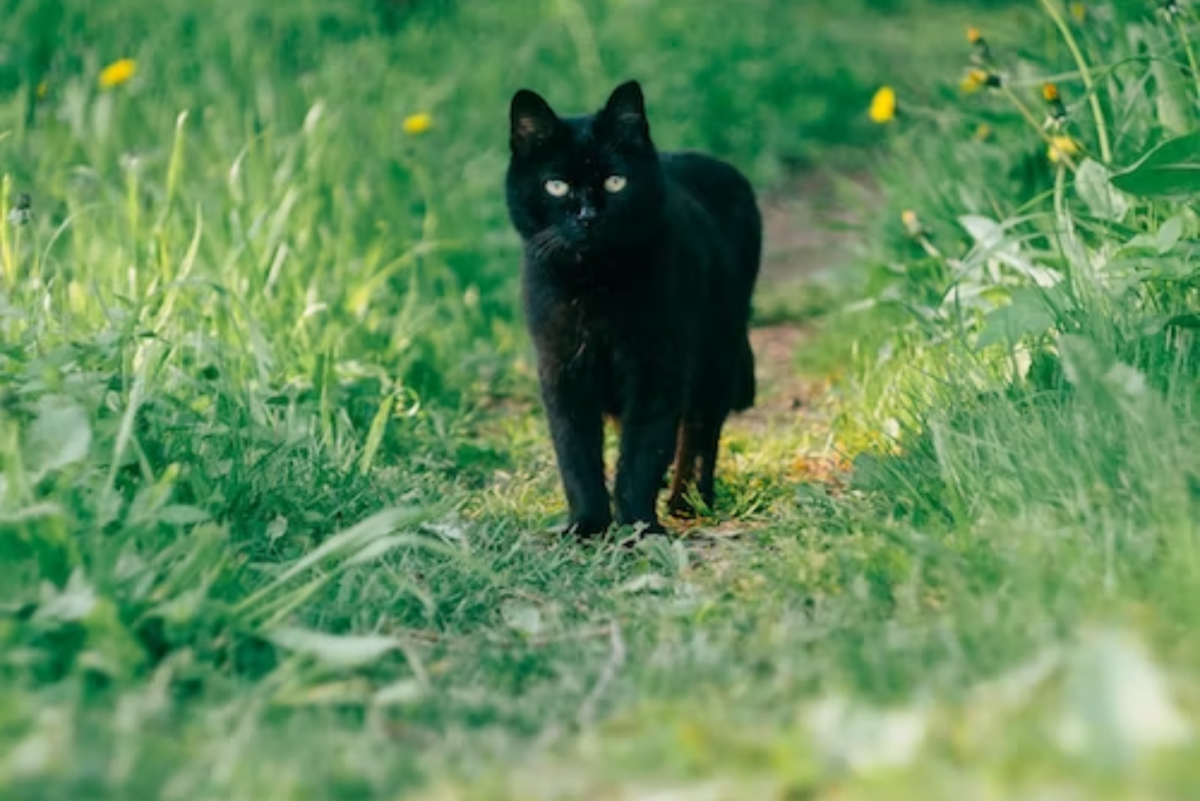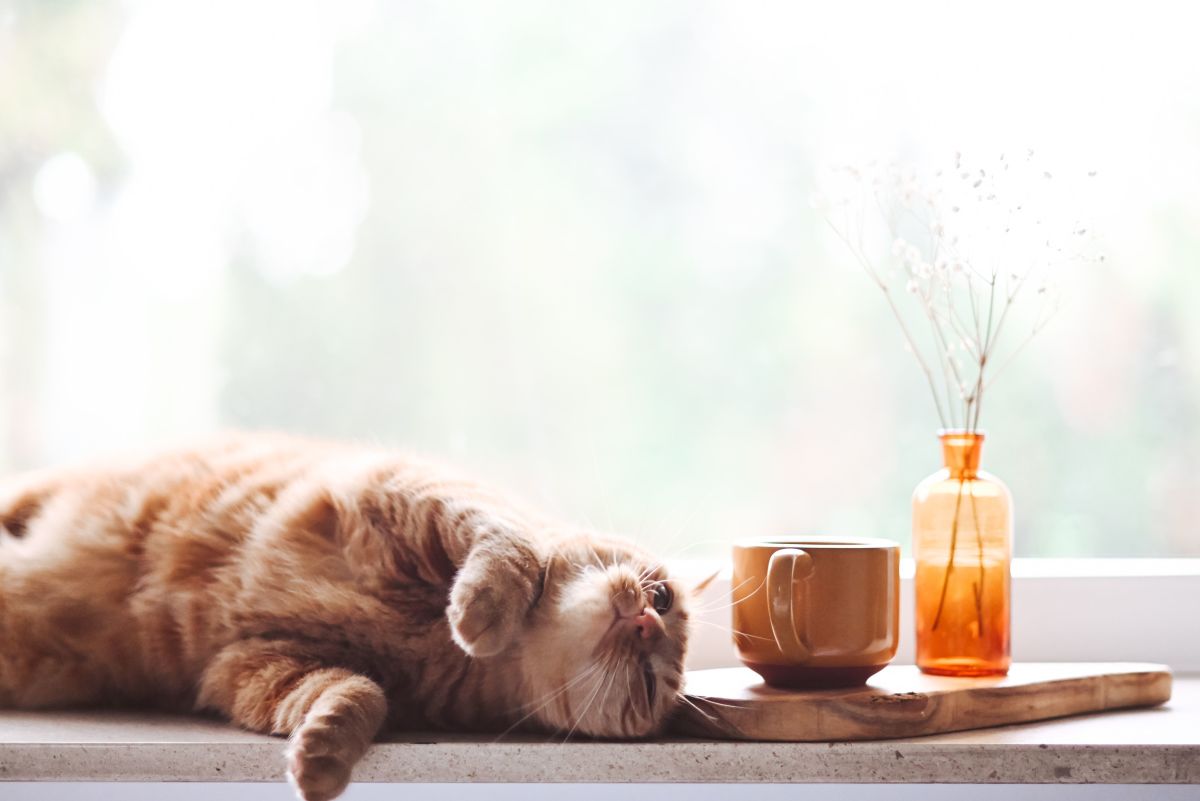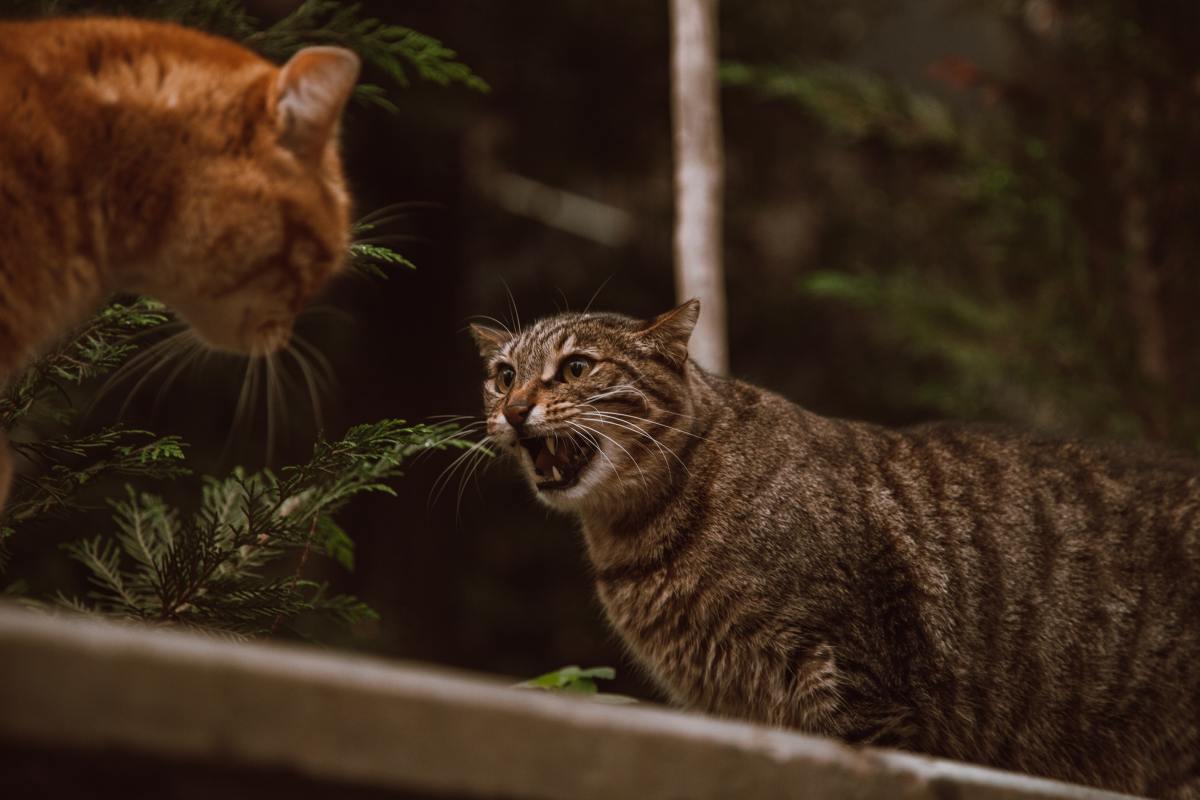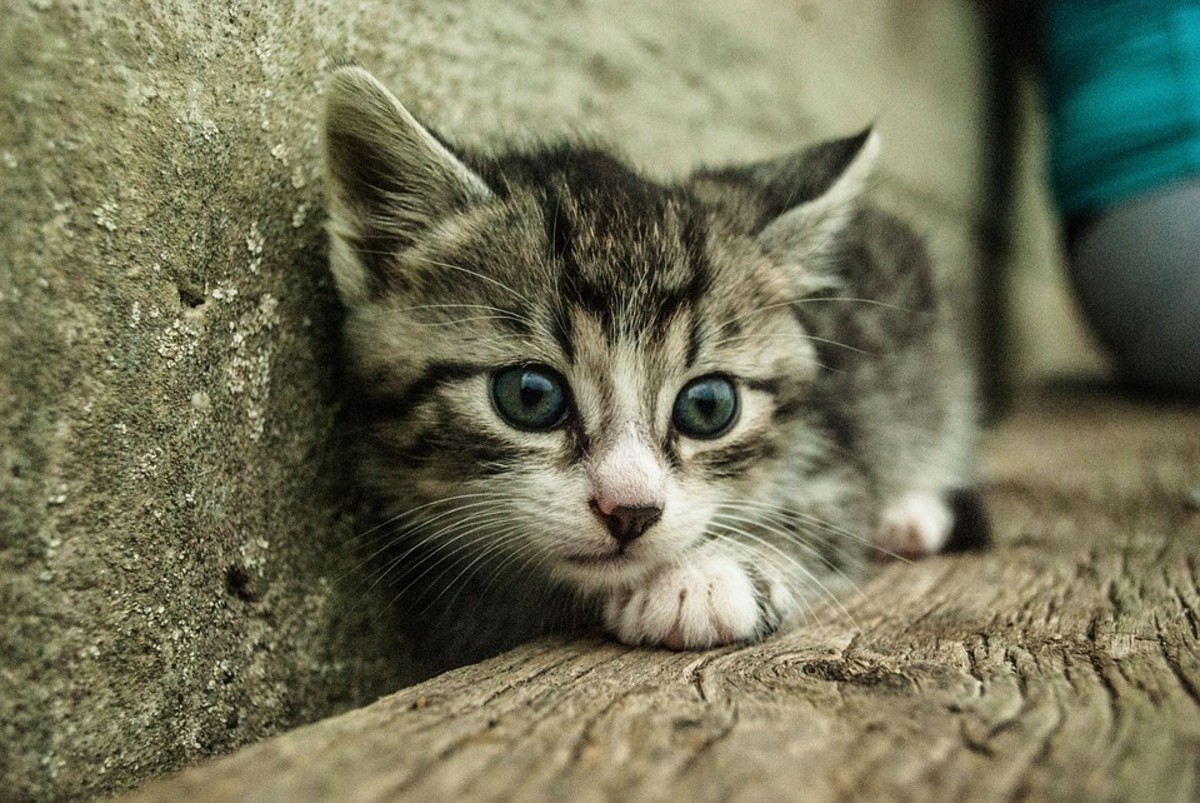Better Understand Your Cat
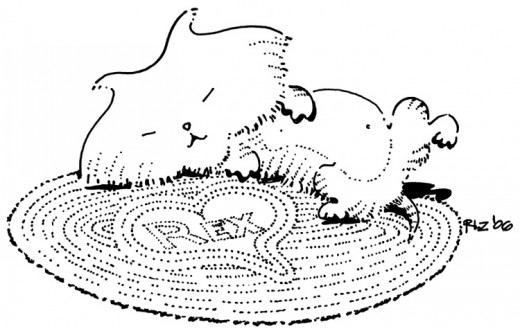
Puzzled by what goes on in that feline noggin? Hoping to cope with your cat and all its idiosyncrasies by trying to relate? Follow me as I lead you through lore and legend to learn more about your crazy cat.
Call them what you will — cat, kitten, kitty, puss, pussycat, feline friend, gato (Spanish), chat (French), katze (German), kot (Polish), quttah (Old Arabic), kats (Yiddish), pasht (Egyptian), qattus (Maltese), katt (Swedish), kottun (Icelandic), kedi (Turkish vernacular), or simply Leo or Miracle (Zimmerman household) — they all seem crazy at one time or another. But that's probably understandable, since they've got a long history of mystery, bizarre behavior and inscrutability behind them.
The Ancient Egyptians, for example, revered a cat-goddess variously named Bast, Basht or Bastet, from which our modern-day terms of puss and pussy probably derive (though in the local vernacular of the time her name more accurately meant 'female devourer'). A deity associated with the sun, Bast was considered protector and defender of the Pharaoh — the Sun-God on Earth — and his realm, and thus appeared extensively in statuary and iconography throughout the kingdom. Apparent everyday embodiments of Bast, house-cats (and temple-cats) were prized by Pharaohs, high priests, Egyptian citizens and slaves alike. They were pampered in life (no surprise there), and upon their deaths were mummified, encased in life-like gilded sarcophagi, and sent off with provisions for the afterlife, just like prominent Egyptians. Killing a cat was a capital crime. It is likely in Egypt that much of the process of domesticating our common house-cat began and continued.
Cats presented a variety of traits that endeared them to early humans. As a differentiating species of wild-cat or lynx, they were small, un-intimidating and generally self-sufficient if need be. They eagerly hunted and killed rodents that infested the grain stores of early farmers, while showing no interest in consuming the grain themselves. They could be taught to assist in hunting and retrieving prey. And they were smart enough to be trained and to acclimate themselves to humans, and curious and affectionate enough to be somewhat constant companions.
However, cats also presented a variety of traits thought strange or perverse by many. Their curiosity and single-mindedness could seem devious. Their independence and disdain could seem other-worldly. And their skill at killing prey, coupled with their fierce yowling (often at night, while sensing a nearby rival or mating opportunity), could seem downright demonic. Being smaller versions of man-eating lions, tigers, panthers and leopards didn’t particularly help their image any, either.
Thus, throughout history and across many cultures, cats have in fact been persecuted. Some have thought of cats as witches’ ‘familiars’ — pets and sidekicks of a sort, but also physical links to the black arts and Satan. Cats were often killed along with their ‘witch’ owner during the worst of the witch frenzies. The historical logic often went something like this: a) a little old woman of the village, whether spinster or widow, lives alone, appears strange and/or scary, and therefore might or must be a witch; b) the little old woman befriends a stray cat, also alone, also lonely, and keeps it as constant company and regularly talks to it; c) some traits of the cat, or simple superstition, make it seem demonic, and perhaps as strange and/or scary as the woman; therefore d) the cat must be the witch’s familiar. As a result, across much of Medieval Europe, cats were commonly captured and killed, especially on particular religious feast days. In 1484, Pope Innocent VIII (yes, it’s ironic that he took the name of ‘Innocent’) denounced both cats and cat owners in a Papal decree, bringing about widespread cat slaughters. Black cats, for their seeming color association with the dark arts and the Dark Lord, often bore the worst of cat persecution. Still today, there are rumored to be thousands of killings of black cats throughout Italy, due to the superstitious belief that they are evil omens or bring about bad luck (we are all familiar with the age-old superstition of a black cat crossing one’s path).
In other settings, though, black cats have been deemed auspicious. They are considered bringers of good luck in the United Kingdom, and are also said by many sailors to be the perfect mascot and good luck charm aboard ship. In some instances, fishermen’s families would keep black cats to benefit from their protective powers over those at sea. An image of a fierce black cat was adopted by the Industrial Workers of the World, and used as they would strike against employers for better wages or working conditions. Some say this is where our term ‘wildcat strike’ originated.
Over the years, the black cat has also been a favorite of illustrators, cartoonists and animators (perhaps because it is far quicker and simpler to ink a black cat than a calico or tortoise-shell one). A black cat adorned posters for Le Chat Noir (The Black Cat) a cabaret in Montmarte, Paris, of the 1880s. Felix the Cat, silent but with a very expressive tale and a distinctive loping walk, was introduced as a cartoon character in the early 1920s. By the 1950s he had appeared in TV shows, feature films, books, animated cartoons, comic strips and panels, as well as on a massive range of merchandise. Felix embodied a cat’s ‘nine lives’: that seemingly preternatural ability to get out of just about any scrape imaginable.
Another very popular black cat is The Cat in the Hat, introduced to the world by Dr. Seuss (Theodor Geisel) in 1957. In addition to being a great teacher for beginning reading, the Cat in the Hat also displayed many commonly observed characteristics typical of the house-cat: curiosity, clarity of focus, playfulness bordering on deviltry, and strong-willed independence. A totally different sort of black cat is presented by Catwoman, the Batman comics foe. As played by both Julie Newmar in the TV series and by Michelle Pfeiffer on the big screen, this black cat is all steamy and sultry and seductive, with more than a hint of dark danger. The innate cuteness and endearing nature of a black (and white) kitten was best captured by Figaro, Disney’s animated pet of Pinocchio and Gepetto, in 1940. Figaro’s antic playfulness then continued in a number of animated shorts developed by Disney studios throughout the 1940s.
Other cat characters throughout popular media continue to express and display some of the more interesting attributes of our everyday pets. The comic cats of B. Kliban (Bernard ‘Hap’ Kliban) are often ‘doorstops’ or ‘meatloafs’, just unmoving lumpy props that get in the way of (and populate) our own odd routines and behaviors. Through their settings, expressions, wardrobes and props, they also often hold a comic mirror up to our absurdist world. For a time, Kliban’s Cats sold more merchandise (especially calendars) in the U.S. than just about any other comic creation. The critically acclaimed ‘Krazy Kat’, star of a comic strip by George Herriman that ran from 1913 to 1944, used a slapstick mixture of surrealism, verbal creativity, playfulness and precise characterization to illuminate its cat-mouse-dog love triangle, in the process raising the denizens of Coconino County, Arizona to iconic status in the world of comic art. It is still surprising today how much of our world and our pets we can recognize in the strip’s deftly drawn panels.
The title character of the French writer Charles Perrault’s ‘Puss in Boots’ is a cat who uses his skills of cunning and deceit to gain favor for his master within the stratified culture of late-17th Century France. In the process of this fairy tale, the swashbuckling cat teaches the reader how to conform to, yet manipulate, the strictures of bourgeois society. Thus, Puss displays the calculated purposefulness, willfulness and independence we see in our own pets, as well as the affection for, and companionship with, his owner.
For a much lighter and goofier take on cats (and dogs) and their foibles, one can turn to the animated Nickelodeon series CatDog (unfortunately no longer airing). In each episode, awakening in a house that was half fish and half dog-bone, Cat was confronted by the contrary impulses of his worse (literal) half, Dog. And still, Garfield the Cat lives on. Created purely, and quite intentionally, as a marketing machine by Jim Davis in 1978, Garfield has become one of the world’s most widely syndicated comic strips, and has spawned a massive merchandising empire. Garfield is probably best described as a fatter, lazier, hungrier Morris the Cat (9Lives Cat Food’s television commercial ‘spokes-cat’), with a sarcastic and sardonic take on the domestic world around him. In that, he seems every bit as complacent and smug as our own housepet.
Find out more about house cats at rickzworld.
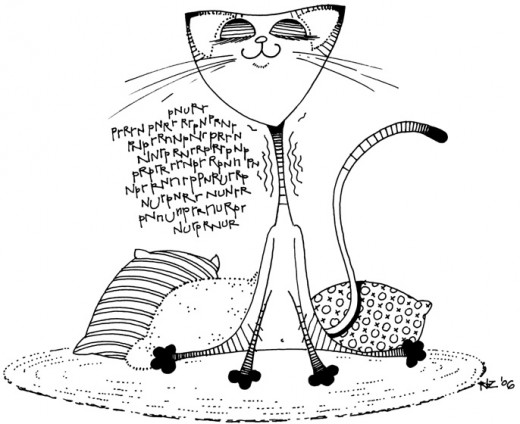
- Leo 4
Leo 4 oooh. wow. Everybodyâs getting all excited because some hottie shows up wearing wacky get-ups, howling away, trying to primp and preen and act all sexy and sinuous and outrageous all at once. Iâve got news for you: I invented that act.... - Drip-Dry, the Devon
Drip-Dry, the Devon Cast your peepers on Drip-Dry, the Devon (thatâs Devon Rex, to all you mere peasants that donât know your cat breeds!). Yes, heâs a cat. And, no, he doesnât seem to share the antipathy to water evidenced by most cats. In.. - Leo 5
Leo 5 In all of my nine lives, I don’t think I’ve ever encountered a creature quite so dense! Of course that chair is mine, and I prefer the turquoise crocheted pillow to that ratty peach thing with the fringe. Stroking my fur should be limited... - Cats, Cats, More Cats
Aaaaaaaaah! Yep. There's a cat there, all right. Nested within the toe-kick space, right on top of the heat register! And not too far from Little Stuffed Eeyore, in case he happens to need an occasional whuppin'. Clean, at last. And here we see the.. - Goofy Big-Whiskered Cat
If you've ever owned a feline, then you've certainly owned one that's goofy in its own particular way. - Have a Happy Indoor Cat
Are you tired of your cat tangling with the neighbors pet? - Devon Rex Cats
If you happen to be looking for a friendly, affectionate, intelligent, good-tempered and relatively maintenance free cat for a pet . . . - Leo 3
Dont act all surprised. Of course, I have an iPad; dont most housecats?


